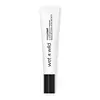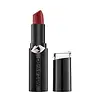What's inside
What's inside
 Key Ingredients
Key Ingredients

 Benefits
Benefits

 Concerns
Concerns

 Ingredients Side-by-side
Ingredients Side-by-side

Isododecane
EmollientMicrocrystalline Wax
Emulsion StabilisingTrimethylsiloxysilicate
EmollientQuaternium-90 Bentonite
Neopentyl Glycol Diheptanoate
EmollientSilica
AbrasiveHydrogenated Styrene/Methylstyrene/Indene Copolymer
Propylene Carbonate
SolventDiisostearyl Malate
EmollientSorbitan Sesquioleate
EmulsifyingPhenoxyethanol
PreservativeTocopheryl Acetate
AntioxidantWater
Skin ConditioningTocopherol
AntioxidantQuartz
AbrasiveHelianthus Annuus Seed Oil
EmollientBisabolol
MaskingSilica Dimethyl Silylate
EmollientPassiflora Edulis Seed Oil
EmollientPentaerythrityl Tetra-Di-T-Butyl Hydroxyhydrocinnamate
AntioxidantArgania Spinosa Kernel Oil
EmollientMacadamia Ternifolia Seed Oil
EmollientCocos Nucifera Oil
Masking1,2-Hexanediol
Skin ConditioningGlycerin
HumectantPrunus Amygdalus Dulcis Oil
Skin ConditioningCaprylic/Capric Triglyceride
MaskingHydrogenated Lecithin
EmulsifyingGlucose
HumectantArginine
MaskingHydroxypropyl Methylcellulose
Emulsion StabilisingCitric Acid
BufferingCI 77220
Cosmetic ColorantAcetyl Glucosamine
Skin ConditioningAscorbic Acid
AntioxidantGlutathione
CI 77891
Cosmetic ColorantMica
Cosmetic ColorantIron Oxides
CI 77491
Cosmetic ColorantCI 77492
Cosmetic ColorantCI 77499
Cosmetic ColorantIsododecane, Microcrystalline Wax, Trimethylsiloxysilicate, Quaternium-90 Bentonite, Neopentyl Glycol Diheptanoate, Silica, Hydrogenated Styrene/Methylstyrene/Indene Copolymer, Propylene Carbonate, Diisostearyl Malate, Sorbitan Sesquioleate, Phenoxyethanol, Tocopheryl Acetate, Water, Tocopherol, Quartz, Helianthus Annuus Seed Oil, Bisabolol, Silica Dimethyl Silylate, Passiflora Edulis Seed Oil, Pentaerythrityl Tetra-Di-T-Butyl Hydroxyhydrocinnamate, Argania Spinosa Kernel Oil, Macadamia Ternifolia Seed Oil, Cocos Nucifera Oil, 1,2-Hexanediol, Glycerin, Prunus Amygdalus Dulcis Oil, Caprylic/Capric Triglyceride, Hydrogenated Lecithin, Glucose, Arginine, Hydroxypropyl Methylcellulose, Citric Acid, CI 77220, Acetyl Glucosamine, Ascorbic Acid, Glutathione, CI 77891, Mica, Iron Oxides, CI 77491, CI 77492, CI 77499
Pentaerythrityl Tetraisostearate
EmollientIsononyl Isononanoate
EmollientOzokerite
Emulsion StabilisingKaolin
AbrasiveTriethylhexanoin
MaskingHydrogenated Microcrystalline Wax
Emulsion StabilisingSynthetic Wax
AbrasiveSilica
AbrasiveOleic/Linoleic/Linolenic Polyglycerides
EmollientMethyl Methacrylate Crosspolymer
Hdi/Trimethylol Hexyllactone Crosspolymer
Bis-Behenyl/Isostearyl/Phytosteryl Dimer Dilinoleyl Dimer Dilinoleate
EmollientCaprylic/Capric Triglyceride
MaskingHydrogenated Vegetable Oil
EmollientTrimethylpentanediol/Adipic Acid/Glycerin Crosspolymer
Skin ConditioningHydrogenated Styrene/Methylstyrene/Indene Copolymer
Dimethicone/Vinyl Dimethicone Crosspolymer
Skin ConditioningDipentaerythrityl Hexa C5-9 Acid Esters
Skin ConditioningMyristyl Lactate
EmollientBis-Diglyceryl Polyacyladipate-2
EmollientTriheptanoin
Skin ConditioningPhytosteryl Macadamiate
Skin ConditioningHelianthus Annuus Seed Oil
EmollientTocopheryl Acetate
AntioxidantPrunus Amygdalus Dulcis Oil
Skin ConditioningPhenoxyethanol
PreservativeSorbic Acid
PreservativeAstrocaryum Murumuru Seed Butter
EmollientPassiflora Edulis Seed Oil
EmollientPhytosteryl Oleate
Skin ConditioningTocopherol
AntioxidantArgania Spinosa Kernel Oil
EmollientMacadamia Integrifolia Seed Oil
Skin ConditioningEthylhexylglycerin
Skin ConditioningCocos Nucifera Oil
MaskingGlyceryl Caprylate
EmollientWater
Skin ConditioningGlycine Soja Oil
EmollientPentaerythrityl Tetra-Di-T-Butyl Hydroxyhydrocinnamate
AntioxidantSodium Hyaluronate
HumectantCI 42090
Cosmetic ColorantCI 77491
Cosmetic ColorantCI 77492
Cosmetic ColorantCI 77499
Cosmetic ColorantCI 45410
Cosmetic ColorantCI 15850
Cosmetic ColorantCI 77891
Cosmetic ColorantCI 19140
Cosmetic ColorantCI 15985
Cosmetic ColorantPentaerythrityl Tetraisostearate, Isononyl Isononanoate, Ozokerite, Kaolin, Triethylhexanoin, Hydrogenated Microcrystalline Wax, Synthetic Wax, Silica, Oleic/Linoleic/Linolenic Polyglycerides, Methyl Methacrylate Crosspolymer, Hdi/Trimethylol Hexyllactone Crosspolymer, Bis-Behenyl/Isostearyl/Phytosteryl Dimer Dilinoleyl Dimer Dilinoleate, Caprylic/Capric Triglyceride, Hydrogenated Vegetable Oil, Trimethylpentanediol/Adipic Acid/Glycerin Crosspolymer, Hydrogenated Styrene/Methylstyrene/Indene Copolymer, Dimethicone/Vinyl Dimethicone Crosspolymer, Dipentaerythrityl Hexa C5-9 Acid Esters, Myristyl Lactate, Bis-Diglyceryl Polyacyladipate-2, Triheptanoin, Phytosteryl Macadamiate, Helianthus Annuus Seed Oil, Tocopheryl Acetate, Prunus Amygdalus Dulcis Oil, Phenoxyethanol, Sorbic Acid, Astrocaryum Murumuru Seed Butter, Passiflora Edulis Seed Oil, Phytosteryl Oleate, Tocopherol, Argania Spinosa Kernel Oil, Macadamia Integrifolia Seed Oil, Ethylhexylglycerin, Cocos Nucifera Oil, Glyceryl Caprylate, Water, Glycine Soja Oil, Pentaerythrityl Tetra-Di-T-Butyl Hydroxyhydrocinnamate, Sodium Hyaluronate, CI 42090, CI 77491, CI 77492, CI 77499, CI 45410, CI 15850, CI 77891, CI 19140, CI 15985
Ingredients Explained
These ingredients are found in both products.
Ingredients higher up in an ingredient list are typically present in a larger amount.
You may know this ingredient as argan oil. Argan Oil has antioxidant, hydrating, and soothing properties.
Studies have shown argan oil can help fight again radical damage from the sun. This makes it effective at preventing hyperpigmentation.
Large amounts of vitamin E found in argan oil helps the skin retain water. Argan oil also contains fatty acids such as linoleic acid, oleic acid, and palmitic acid. It is also a good source of lipids.
Another benefit of argan oil is skin-soothing. It can help reduce inflammation-related skin symptoms.
Argan Oil is effective at regulating sebum production in pores. This can make it effective at treating hormonal acne.
Traditionally, argan oil was used for its antibacterial and antifungal properties. However, argan oil contains fatty acids that may make it not fungal-acne safe.
Argan Trees are native to Morocco.
Learn more about Argania Spinosa Kernel OilThis ingredient is an emollient, solvent, and texture enhancer. It is considered a skin-softener by helping the skin prevent moisture loss.
It helps thicken a product's formula and makes it easier to spread by dissolving clumping compounds.
Caprylic Triglyceride is made by combining glycerin with coconut oil, forming a clear liquid.
While there is an assumption Caprylic Triglyceride can clog pores due to it being derived from coconut oil, there is no research supporting this.
Learn more about Caprylic/Capric TriglycerideCi 77491 is also hydrated iron III oxide. It's sole purpose is to give a red/pink hue to products.
Iron III oxides are classified as inorganic chemicals for coloring.
Synthetically created Ci 77491 is considered safer than those naturally found. This is because the synthetically created version may contain less impurities. Iron oxides are generally non-toxic and non-allergenic.
Learn more about CI 77491Ci 77492 is also hydrated iron III oxide. It's sole purpose is to give a yellow hue to products.
Iron III oxides are classified as inorganic chemicals for coloring.
Synthetically created Ci 77492 is considered safer than those naturally found. This is because the synthetically created version may contain less impurities. Iron oxides are generally non-toxic and non-allergenic.
Learn more about CI 77492Ci 77499 is also hydrated iron III oxide. It is created from mixing red and black iron oxides. This helps give shades of darkness to a product.
Iron III oxides are classified as inorganic chemicals for coloring.
Ci 77891 is a white pigment from Titanium dioxide. It is naturally found in minerals such as rutile and ilmenite.
It's main function is to add a white color to cosmetics. It can also be mixed with other colors to create different shades.
Ci 77891 is commonly found in sunscreens due to its ability to block UV rays.
Learn more about CI 77891Cocos Nucifera Oil is obtained from the kernels of the coconut fruit. In other words, this is coconut oil.
Coconut Oil is rich in fatty acids with lauric acid making up the majority of these. It also contains linoleic acid. Due to this high fatty acid content, coconut oil helps trap moisture and soften skin.
Despite being antibacterial, coconut oil may not be great for acne-prone skin. It is comedogenic and may clog pores. This ingredient may not be safe for malassezia or fungal acne.
Note: Coconut Oil should not replace your sunscreen for UV protection. Studies show it only blocks about 20% of UV.
This oil is non-volatile and has a light scent.
The term 'fragrance' is not regulated in many countries. In many cases, it is up to the brand to define this term. For instance, many brands choose to label themselves as "fragrance-free" because they are not using synthetic fragrances. However, their products may still contain ingredients such as essential oils that are considered a fragrance.
Learn more about Cocos Nucifera OilHelianthus Annuus Seed Oil is the oil derived from the seeds of a Sunflower. Sunflower seed oil is non-fragrant. It is an emollient, meaning it helps to soften the skin.
Sunflower seed oil contains many fatty acids. The fatty acids found in sunflower seeds include (from highest amount to least): linoleic acid, myristic acid, palmitic acid, stearic acid, arachidic acid, oleic acid, and linolenic acid.
These fatty acids help the skin create ceramides. Ceramides play a role in repairing the skin barrier.
Helianthus Annuus Seed Oil helps moisturize the skin. This in turn helps the skin look more rejuvenated and smoother.
Sunflowers are rich in vitamin E.
Historians believe Indigenous cultures of North America domesticated sunflowers before corn. Thus they relied on sunflower oil for a variety of uses. One such use is moisturizing skin and hair.
Sunflower seed oil may not be fungal acne safe. We recommend speaking with a professional if you have any concerns.
Learn more about Helianthus Annuus Seed OilWe don't have a description for Hydrogenated Styrene/Methylstyrene/Indene Copolymer yet.
Passiflora Edulis Seed Oil is an oil and isn't fungal acne safe.
Pentaerythrityl Tetra-Di-T-Butyl Hydroxyhydrocinnamate (long name, huh?) is a synthetic antioxidant.
It is used to help stabilize other antioxidants or prevent the color from changing in a product.
As an antioxidant, it helps fight free-radical molecules. Free-radical molecules are capable of damaging our cells and other genetic material. Thus, antioxidants may reduce the signs of aging.
This ingredient is oil-soluble.
Learn more about Pentaerythrityl Tetra-Di-T-Butyl HydroxyhydrocinnamatePhenoxyethanol is a preservative that has germicide, antimicrobial, and aromatic properties. Studies show that phenoxyethanol can prevent microbial growth. By itself, it has a scent that is similar to that of a rose.
It's often used in formulations along with Caprylyl Glycol to preserve the shelf life of products.
Prunus Amygdalus Dulcis Oil comes from the sweet almond, a tree native to Iran. This oil has no fragrance and is non-volatile.
Almonds contain healthy fats, vitamins, and minerals. It is a rich source of Vitamin E, a great antioxidant and skin conditioning ingredient. Sweet almond oil contains fatty acids such as linolenic acid and triglycerides.
The content of sweet almond oil makes it a great emollient; it can help soften and hydrate your skin. Emollients create a barrier over your skin to trap moisture in. Sweet almond oil has antioxidant properties.
Those with an almond allergy should be careful of this ingredient and speak with a professional about using it in your skincare.
This ingredient may not be fungal-acne safe.
Learn more about Prunus Amygdalus Dulcis OilSilica, also known as silicon dioxide, is a naturally occurring mineral. It is used as a fine, spherical, and porous powder in cosmetics.
Though it has exfoliant properties, the function of silica varies depending on the product.
The unique structure of silica enhances the spreadability and adds smoothness, making it a great texture enhancer.
It is also used as an active carrier, emulsifier, and mattifier due to its ability to absorb excess oil.
In some products, tiny microneedles called spicules are made from silica or hydrolyzed sponge. When you rub them in, they lightly polish away dead skin layers and enhance the penetration of active ingredients.
Learn more about SilicaTocopherol (also known as Vitamin E) is a common antioxidant used to help protect the skin from free-radicals and strengthen the skin barrier. It's also fat soluble - this means our skin is great at absorbing it.
Vitamin E also helps keep your natural skin lipids healthy. Your lipid skin barrier naturally consists of lipids, ceramides, and fatty acids. Vitamin E offers extra protection for your skin’s lipid barrier, keeping your skin healthy and nourished.
Another benefit is a bit of UV protection. Vitamin E helps reduce the damage caused by UVB rays. (It should not replace your sunscreen). Combining it with Vitamin C can decrease sunburned cells and hyperpigmentation after UV exposure.
You might have noticed Vitamin E + C often paired together. This is because it is great at stabilizing Vitamin C. Using the two together helps increase the effectiveness of both ingredients.
There are often claims that Vitamin E can reduce/prevent scarring, but these claims haven't been confirmed by scientific research.
Learn more about TocopherolTocopheryl Acetate is AKA Vitamin E. It is an antioxidant and protects your skin from free radicals. Free radicals damage the skin by breaking down collagen.
One study found using Tocopheryl Acetate with Vitamin C decreased the number of sunburned cells.
Tocopheryl Acetate is commonly found in both skincare and dietary supplements.
Learn more about Tocopheryl AcetateWater. It's the most common cosmetic ingredient of all. You'll usually see it at the top of ingredient lists, meaning that it makes up the largest part of the product.
So why is it so popular? Water most often acts as a solvent - this means that it helps dissolve other ingredients into the formulation.
You'll also recognize water as that liquid we all need to stay alive. If you see this, drink a glass of water. Stay hydrated!
Learn more about Water